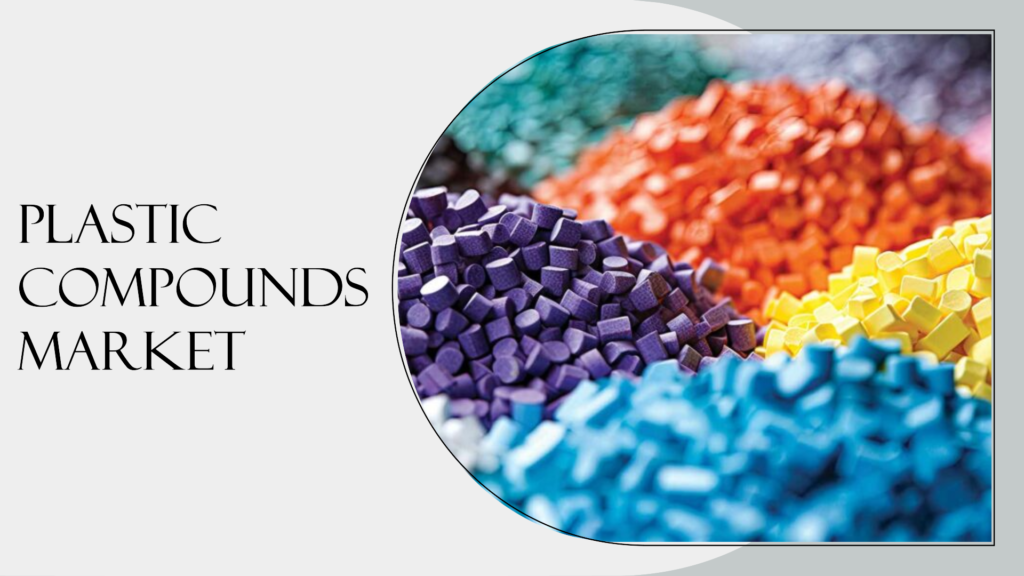
The plastic compounds market has witnessed remarkable growth in recent years, driven by the rising demand for lightweight and durable materials across various industries. As a seasoned professional in the plastic compounds industry, you’re likely aware of the significant role these materials play in manufacturing, packaging, automotive, electronics, and numerous other sectors. This article delves into the current state of the plastic compounds market, exploring key trends, drivers, and future prospects that every expert should consider.
The global plastic compounds market is valued at USD 70.8 billion in 2024 and is projected to reach USD 97.3 billion by 2029, growing at 6.6% cagr from 2024 to 2029.
What Are Plastic Compounds?
Plastic compounds are formulations of base polymers mixed with additives such as fillers, stabilizers, colorants, and reinforcing agents. These compounds are engineered to enhance specific properties, such as strength, durability, flexibility, and resistance to environmental factors. The versatility of plastic compounds makes them indispensable across a wide range of applications, from automotive components and electrical housings to consumer goods and medical devices.
Key Market Segments
The plastic compounds market is broadly segmented by polymer type, application, and region. The major polymer types include:
- Polyethylene (PE): Widely used in packaging, PE compounds are valued for their flexibility, chemical resistance, and ease of processing.
- Polypropylene (PP): Known for its high melting point, PP is commonly used in automotive parts, textiles, and consumer products.
- Polyvinyl Chloride (PVC): PVC compounds are essential in construction, automotive, and medical industries due to their durability and versatility.
- Acrylonitrile Butadiene Styrene (ABS): ABS is favored in electronics and automotive applications for its strength, impact resistance, and aesthetics.
- Polystyrene (PS): PS compounds find applications in packaging, insulation, and disposable products due to their ease of molding and cost-effectiveness.
Market Trends and Drivers
- Sustainability and Environmental Concerns
One of the most significant trends influencing the plastic compounds market is the growing emphasis on sustainability. Governments, consumers, and industry stakeholders are increasingly prioritizing eco-friendly materials, leading to a surge in demand for biodegradable and recyclable plastic compounds. Companies are investing in research and development to create sustainable alternatives that meet regulatory standards while maintaining performance.
- Lightweighting in Automotive and Aerospace Industries
The automotive and aerospace industries are major consumers of plastic compounds, driven by the need for lightweight materials to improve fuel efficiency and reduce emissions. Plastic compounds offer an ideal solution, providing the necessary strength and durability without adding excessive weight. This trend is expected to continue, with innovations in composite materials and high-performance polymers further expanding the market.
- Advancements in Additive Manufacturing
The rise of additive manufacturing, or 3D printing, has opened new avenues for the plastic compounds market. Customizable compounds that can be tailored to specific applications are in high demand, enabling manufacturers to produce complex geometries and prototypes with ease. The ability to fine-tune material properties through compounding is a key advantage, allowing for greater flexibility and innovation in design.
- Growing Demand in Electronics and Electricals
The electronics and electrical industry is another major driver of the plastic compounds market. As devices become smaller, more efficient, and more powerful, the demand for high-performance plastic compounds with superior electrical insulation, thermal stability, and flame retardancy continues to rise. The ongoing trend towards miniaturization and the proliferation of smart devices are expected to further boost market growth.
Challenges in the Plastic Compounds Market
While the plastic compounds market is poised for growth, it is not without its challenges. One of the primary concerns is the fluctuating prices of raw materials, particularly petrochemical-based polymers. Supply chain disruptions and geopolitical factors can lead to price volatility, affecting profit margins for manufacturers.
Another challenge is the stringent regulatory environment surrounding plastic use, especially in regions like Europe and North America. Compliance with environmental regulations, such as the European Union’s REACH and the U.S. EPA’s guidelines, requires continuous innovation in formulation and manufacturing processes. Companies must balance the need for compliance with the demand for high-performance materials, which can be a complex and costly endeavor.
Future Prospects and Opportunities
The future of the plastic compounds market is promising, with several opportunities on the horizon. The growing trend towards circular economy models presents a significant opportunity for the development of recyclable and biodegradable compounds. Companies that can offer sustainable solutions without compromising on performance are likely to gain a competitive edge.
In addition, the expanding applications of plastic compounds in emerging industries, such as electric vehicles (EVs) and renewable energy, are expected to create new growth avenues. EVs, in particular, require lightweight, durable, and thermally stable materials, making plastic compounds a critical component in battery housings, interior components, and charging infrastructure.
Download PDF Brochure :
The plastic compounds market is dynamic, driven by technological advancements, sustainability initiatives, and the evolving needs of various industries. As an expert in the field, staying abreast of these trends and challenges is crucial for navigating the complexities of the market and seizing emerging opportunities. With continued innovation and a focus on sustainable practices, the plastic compounds industry is well-positioned for sustained growth in the coming years.
The insights provided here should serve as a valuable guide for professionals looking to deepen their understanding of the plastic compounds market and its future trajectory.
